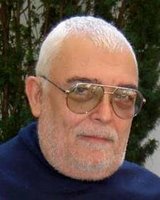College Mathematics: The Unteachable, Or Untaught?
 by Ron Penner
by Ron Penner
I obtained a degree in Mathematics, so became somewhat familiar with the way it was taught and of the difficulties it seemed to engender in many others. These experiences prompted a series of problems which I later attempted to unravel, along with other related issues, which I now propose to explore.
I was often appalled and somewhat amazed at the manner in which these courses were taught, especially at the 100 and 200 level. There was so much verbage written on a blackboard or overhead projector which appeared to me to be pointless, albeit somewhat conventional. But later I began to muse, 'how can these subjects effectively be taught' and I began to appreciate the difficulties the professors experienced. I hypothesized that they had learnt and experienced Mathematics in a way far different from most of their students and that the gap was far too wide to be bridged by any conventional pedagogical methodology
What was this exprience of learning that they and many Math majors had and others did not seem to possess? The most basic was to regard this level of Mathematics, in most of its enormous diversity, as a language, a symbolic language that needed to be learnt and used. But it was much more sensitive to how much one took in at a glance, or alternatively how quickly one read that language, than learning to read one's native language, for this is much more akin to pattern recognition of an ungerlying logic, than to reading as it is usually understood. There seemed to me to be a minimum speed of assimilation that was requisite to fully grasp these concepts and courses, and that that was an aptitude that could hardly be taught. Another was an appreciation for the elegance of the reasoning entailed, and even the elegance of the notation. And finally, there was the ability and need, to generalize, to not be content with a theorem or lemma or definition until you had expanded these, until you had discovered as many of their extensions and further implications as possible. All of this was a mind-set that one either possessed or did not possess, although these are always matters of degree, but how does one teach a mind-set that is innate in some and absent in others? This is a very difficult question, and I am not sure that there really is an adequate answer to it.
I also found that I was very sensitive to the way such subjects were set forth on the page, and rummaged through the library until I found the most elegant text---seldom the one that was prescribed for the course. For if Bertrand Russell stated 'that there is no such thing as ugly Mathematics,' that did not preclude many ugly or less than elegant textbooks. And in the Physical Sciences, in particular, the ratio between written text or explanation and mathematical formulae was important to me, so that if one could follow the text simply by following the logical development of the mathematics, that always seemed something that was desirable. These I take to possibly be limited strategems to bridge the chasm I previously adumbrated. Of course, this dictum applies to any study, but particularly to Mathematics and to a slightly lesser extent the Physical Sciences, 'Never be content, initially, with the text that is assigned.' Then there is the appreciation of rigour of analysis. In an introductory course on Differential Equations, there was a text I always will value and esteem because it was so beautifully written and rigorous, which equated to greater simplicity and ease of comprehension. But one day I heard an acquaintance refer to this text as "the yellow peril"---it had a yellow cover---and that all of the students in his class detested it, and I was amazed and at a loss for words. Rigour of analysis, I mournfully concluded must not be an easily acquired taste. There is also the width of generalization of a particular approach which gives joy to that phenomena when it occurs. In trigonometry, the double and multiple angle formulae seem to bear no intimate relationship to one another. Then one discovers complex numbers and their utility, i.e. e to the i-theta power and the whole subject opens up and much greater vistas appear. I will always remember discovering, quite on my own, the Gamma and Beta Integrals. and the joy in discovering how many integrals could be fitted into these two basic structures simply through simple changes of variables.
But there are deep differences of aptitude and approach even among math majors themselves, perhaps greater than in any other discipline. There are those who excel in reading and comprehending and using the symbolisms, of which Algebra would be the prototype, and those who are far more spacially oriented, of which the Geometries serves as the prototype. I once heard of an experiment in teaching beginning college Mathematics at a private school for the gifted in Seattle. The material had been presented from an essentially algebraic prespective, when suddenly, in the middle of the course, it was taught from an essentially geometric perspective. And suddenly the class standing tipped over, becoming almost the exact opposite of what it had been. The geometric approach can greatly simplify many areas, but there are vast stretches of Mathematics for which there is no effective substitute for symbolic tranformations and manipulations. There is one further division which is the least recognized, but has increasingly become vital in more recent years. This involves a gift for, and love of, abstraction, for its own sake. This can also involve a love of getting at the fundaments of a subject. For lack of a better term, this might be called the Axiomatic Approach. Abstract Algebra can serve as its prototype and an n-dimensional cohomology group could serve as an example. Those gifted with this approach or aptitude will tend to have a better grasp of the whole of Mathematics, at least in outline form, and be the ones most likely to achieve some of the syntheses modern Mathematics desperately needs.
But I cannot leave this article so bleak and not attempt some remedies to the difficulties posed, some way of bridging these gaps for those not disposed to Mathematics in general. There are certain moments in the life of learning where one enters, in something approaching a Piagetian sense, a totally new domain. I believe one should, in many cases, pause and survey what lies ahead, emphasizing the great power and utility of the new approach, as well as some of the anticipated difficulties and how they may be overcome, rather than proceeding linearly to cover a prescribed curricula. One such branching point would surely be the point at which variables are first introduced to stand for any number within a specified domain. Also it might help if this introduction was combined with a sense that one was entering upon a new phase of mental maturity and growth. Then there are spectacular spurts in intellectual growth which can change and redirect one's whole life, and these need to be recognized and provided for. In his book, "Disturbing The Universe," Freeman Dyson briefly described an incident that occurred when he was ten years old. He purchased a book on the Differential and Integral Calculus about 700 pages in length, and when the family went for a winter retreat at Christmas break on the east coast of England just prior to World War II, he studied the work and did all of the problems for about ten hours a day, ten days to two weeks. I have always assumed since I read this, that if this or a similar experience had not occurred at about this stage, we would never have heard of Freeman Dyson. I had a similar experience, much later in life with the Calculus in an October retreat in Moclips---also on the ocean---after a summer as a forest lookout. The only way these experiences can be accomodated in colleges and universities, for those who need and are prone to them, in my opinion, is through a liberal, tutorial approach where one can design when and how to study a specific topic or field within a discipline. Someday psychometric tests may be devised to identify these individuals before they begin to enter college. But there are many instances in which courses tailored to specific disciplines such as Physics, Chemistry, the Life Siences and the Social Sciences are specially designed for the needs of these majors. This essentially involves applied Mathematics, in which a major aspect is to understand why certain formulae give a correct description of the phenomena they model, as well as how they can most effectively be used. This is far more than simply providing a list of relevant formulae and gives 'value added' rather than a 'cookbook approach.' And especially in the Social Sciences, Statistics must be taught to clearly delineate both the strenghs and limitations or various approaches. There is perhaps a great need for mathematicians to act as a kind of academic policeman and interfere in any department of the University when they feel that their subject is being misused or trivialized. But they must also, in such courses, teach others to---and demand that they--- think for themselves. They are not meant---and do not see themselves---as a service agency for the solution of problems in Mathematics, others in the university and society as a whole, find difficult to solve on their own. Finally, the Computer Sciences have taken over part of the former function of Mathematics in providing algorithms which encompass in their generality, almost all disciplines, and, in some sense, have replaced Mathematics, as the premier discipline for all of the other sciences---and this is wellcome.
My Senecan ramble must come to a close, hoping that it has not been too disjointed or too obvious.















